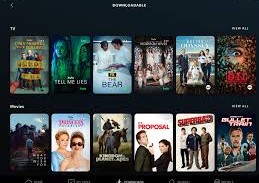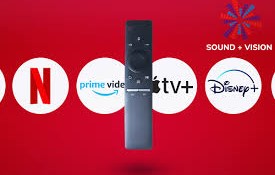Pay TV Subscription: The Ultimate Guide for 2025
In today’s world, watching television is no longer confined to regular cable. With the emergence of digital platforms, the concept of a pay TV subscription has altered. Now, users have various options to select from, such as satellite TV, cable TV, and internet-based TV services. This essay will go into the basics of pay TV subscriptions, their benefits, sorts, pricing, and what makes them a vital component of today’s entertainment environment.
1. Introduction to Pay TV Subscription
A pay TV subscription refers to services where viewers pay a regular charge to access television programs. This can include cable TV, satellite TV, or IPTV services. Unlike free-to-air networks, pay TV offers a broader selection of content, including premium movies, live sports, international news, and specialist channels.
Buy now1.1 What is a Pay TV Subscription?
A pay TV subscription involves paying for access to a collection of channels and on-demand entertainment. This programming can be transmitted on cable, satellite, or through internet connections.
1.2 The Evolution of Pay TV
In the past, cable and satellite TV were the principal sources of pay TV subscriptions. However, with improvements in technology, services like IPTV and streaming have altered the way people enjoy television.
2. Different Types of Pay TV Subscription
Pay TV subscriptions come in several ways. The most prevalent varieties include:
2.1 Cable TV Subscription
Cable TV is one of the most conventional kinds of pay TV. It involves receiving TV channels via coaxial lines. Cable bundles normally feature a combination of local and national channels, as well as premium channels and on-demand programming.
2.2 Satellite TV Subscription
Satellite TV operates by delivering signals via satellites to a receiver dish. This type of service is very popular in rural locations where cable is not available. Satellite TV also offers numerous channel packages including high-definition channels.
2.3 IPTV Subscription
Internet Protocol Television (IPTV) provides content through internet connections rather than traditional satellite or cable. IPTV subscriptions are commonly coupled with high-speed internet services and offer interactive features, including video on demand.
2.4 Streaming Services Subscription
Streaming services like Netflix, Hulu, and Amazon Prime have become increasingly popular. While not standard pay TV subscriptions, they offer on-demand video programming for a monthly price.
3. How to Choose the Right Pay TV Subscription for You
Choosing the correct pay TV subscription depends on various aspects such as budget, channel preferences, and the technology you’re comfortable with.
3.1 Determine Your Budget
The first stage is to establish how much you’re willing to spend each month. Some pay TV subscriptions offer reasonable packages, while others can be more expensive, especially if you add premium channels.
3.2 Identify the Channels You Need
Think about the content you want to access. Do you favour sports networks, foreign news, or movies? Understanding what type of programming you need can help you choose the finest pay TV package.
3.3 Consider Bundling Services
Some companies provide packages that mix TV, internet, and phone services. Bundling services may provide a discount compared to purchasing each service separately.
3.4 Check for Availability in Your Area
Not all forms of pay TV subscriptions are available in every area. Check what services are available in your region before committing to a provider.
4. Benefits of Pay TV Subscription
A premium TV membership delivers various perks, making it an attractive alternative for many people. Here are the primary advantages:
4.1 Access to a Wide Range of Channels
Pay TV subscriptions allow access to countless channels, including speciality ones for sports, news, and entertainment.
4.2 Premium Content and HD Channels
Most pay TV packages give access to premium programming like the latest blockbusters, live events, and high-definition channels.
4.3 No Ads (In Some Packages)
Many premium channels included in a pay TV subscription come ad-free, allowing you to watch your content without interruptions.
4.4 On-Demand Content
Pay TV services, notably IPTV and streaming services, allow access to a library of on-demand material. This covers movies, shows, and even past episodes of popular series.
Buy now5. Pay TV Subscription Pricing
Pricing is one of the key issues when selecting a pay TV subscription. The cost can vary depending on numerous factors:
5.1 Basic vs. Premium Packages
Basic packages provide a limited number of channels, while premium packages allow access to more channels and exclusive programming. Choose according to your budget and viewing preferences.
5.2 Additional Fees for Equipment
Some pay TV subscriptions, notably satellite and cable services, require renting equipment like receivers or set-top boxes. These fees can increase the overall cost of the subscription.
5.3 Pay-Per-View Options
Some services allow you to pay for individual events or shows as they air, such as live sporting events. These pay-per-view options are normally an extra fee to your membership.

6. How to Set Up a Pay TV Subscription
Setting up a pay TV subscription is simple, but it differs depends on the sort of provider you choose. Here’s how to set it up:
6.1 Cable or Satellite TV Installation
Cable or satellite TV companies generally send a technician to install the necessary equipment, including receivers and satellite dishes. Make sure you have the proper infrastructure at home.
6.2 IPTV Setup
For IPTV, all you need is a high-speed internet connection and a compatible device, such as a smart TV, set-top box, or streaming device. Simply subscribe to a service and follow the on-screen instructions.
6.3 Streaming Service Activation
Most streaming services can be activated instantly through apps on smart devices or using a web browser. Subscriptions can typically be managed immediately through the provider’s website.
7. Is Pay TV Subscription Worth It?
Whether a pay TV subscription is worth it depends on your entertainment demands and budget.
7.1 Comparing Pay TV vs. Free TV
While free TV delivers limited material, paid TV provides more channels, greater quality, and unique entertainment. For serious watchers, pay TV is typically a better investment.
7.2 The Rise of Cord-Cutting
Many individuals are flocking to streaming alternatives and cancelling out traditional pay TV subscriptions entirely. Consider whether you’re ready to embrace cord-cutting or if traditional services satisfy your needs.
8. Alternatives to Pay TV Subscription
If you’re seeking for alternatives to a pay TV subscription, various solutions are available:
8.1 Streaming Services
Platforms like Netflix, Hulu, Disney+, and YouTube TV offer on-demand video content, sometimes with less commitments and at lower pricing than traditional pay TV.
8.2 Free Streaming Services
Services like Pluto TV, Tubi, and Crackle give free access to a range of channels and material, but generally with advertising.
8.3 Over-the-Air (OTA) TV
Over-the-air (OTA) TV allows you to get broadcast channels for free with an antenna. However, OTA TV offers a restricted selection compared to subscription TV.
9. The Future of Pay TV Subscriptions
The future of pay TV subscriptions will certainly continue to alter as new technology and services emerge.
9.1 5G and IPTV Growth
With the implementation of 5G technology, IPTV subscriptions will become increasingly quicker and more accessible, providing smoother streaming and more interactive features.
9.2 Personalized Content
Future pay TV services may become more personalized, presenting selected content based on viewer interests. This might be an interesting shift in how we view TV.
9.3 Virtual and Augmented Reality Integration
Virtual reality (VR) and augmented reality (AR) technology could alter how we engage with TV content, creating immersive experiences for viewers.
Buy now10. Conclusion
A premium TV subscription allows access to a large choice of material, from entertainment to sports and news. Whether you prefer standard cable, satellite TV, IPTV, or streaming services, there’s an option for everyone. The goal is to identify your needs, find the best solution, and make an informed decision. Pay TV subscriptions provide value for consumers looking for comprehensive, high-quality television programs.

Frequently Asked Questions (FAQs)
What is a pay TV subscription?
A pay TV membership allows you access to numerous TV channels and on-demand programming for a monthly price.
What types of pay TV subscriptions are available?
The main varieties are cable TV, satellite TV, IPTV, and streaming services.
What’s the difference between cable and satellite TV?
Cable TV employs coaxial wires, whereas satellite TV transmits signals via satellite dishes.
Are there any alternatives to pay TV?
Yes, alternatives include streaming services, free streaming applications, and over-the-air (OTA) TV.
How much does a pay TV subscription cost?
The cost varies on the provider and plan you choose, with rates ranging from $30 to $100+ each month.
Can I package TV with other services?
Yes, several companies provide bundles that include internet and phone services along with TV.
Is pay TV worth the cost?
If you watch a lot of premium material or live sports, a pay TV subscription can be worth it.
How can I set up a pay TV subscription?
The setup process depends on the service. You may need to install equipment for cable/satellite TV or simply subscribe for IPTV/streaming services.
What is the future of pay TV?
The future of pay TV will likely entail quicker IPTV systems, more tailored content, and the integration of VR/AR technologies.
Are streaming services cheaper than pay TV?
Streaming services are frequently more inexpensive and flexible but may offer fewer programming compared to traditional pay TV subscriptions.

